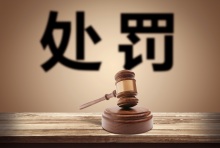Cilostazol在预防复发中风的效果和阿斯匹灵一样有效
导读:
项随机驱试验结果认cilostazol (Pletal,Otsuka药厂)第3型磷酸二酯酵素(PDE3)抑制剂,在预防复发中风的效果和阿斯匹灵一样好,显著降低出血比率
在中国进行的此一研究中,认为使用cilostazol者的复发中风比率比使用阿斯匹灵者低,但差异并未达统计上的显著意义。
第一作者,中国北京学第一医院的Yining Huang医师结论表示,cilostazol组的缺血性和出血性中风比率降低,认为cilostazol对中国的缺血性中风病患而言,或许比阿斯匹灵有效且更安全;不过,需要更大型的第3期试验来证实。
本研究由中国的健康部门与Otsuka药厂共同赞助,5月5日在线上发布消息,将在6月号的Lancet Neurology期刊中发表。
【前驱发现】
大部分的病患在中风之后接受阿斯匹灵治疗,但是阿斯匹灵相关的大脑出血一直都是被考量的并发症,特别是在中国,社区中的次级预防计划显示有着大脑出血的高发生率。
作者写道,Cilostazol在美国已经核准用于治疗间歇性跛行症合并周边血管疾病之症状;藉由预防细胞间第二讯息子环单磷酸腺苷(cyclic AMP)的不活化和不可逆抑制血小板聚合和血管扩张而发生作用,也显示可以延迟粥状动脉硬化发生、保护内皮细胞、抑制动脉平滑肌细胞增生。
之前的日本族群研究显示出cilostazol在预防缺血性中风的效果;Huang医师等人写道,我们的报告是比较cilostazol和阿斯匹灵,在少样本上评估对预防二度中风的效果以及安全性的研究结果,可以作为大型第3期试验的前驱研究。
这项试验称为“Cilostazol vs Aspirin for Secondary Ischemic Stroke Prevention (CASISP) ”,是中心、双盲研究,纳入了 720名在最近1-6个月内发生缺血性中风的病患,病患接受治疗12-18个月,且使用T1磁震造影 (MRI)、T2 MRI、扩散磁振造影、T2液体衰减反转回复影像(FLAIR)以及T2梯度回波影像等方式,在研究开始和结束时进行影像检查;初步终点为任何的中风复发,包括缺血性和出血性中风或者蛛网膜下出血。
Cilostazol组有12名病患达到初步终点,阿斯匹灵组有20名达到;使用Kaplan-Meier曲线所计算的估计风险比为0.62(Cilostazol组和阿斯匹灵组的初步终点风险比较) (95% CI, 0.30 – 1.26; P = 0.185)。
CASISP: Cilostazol 相较于阿斯匹灵的终点 终点 Cilostazol 阿斯匹灵 缺血性中风(n) 11 15 有症状出血性中风 (n) 1 5 中风复发比率 ( 病患 / 年 ) 3.26 5.27
他们指出,最初6个月的治疗中,曲线均类似,而阿斯匹灵在这段期间比cilostazol更有效;不过,6个月之后,曲线发生交叉,变成cilostazol比较好;研究结束时,相较于阿斯匹灵组,cilostazol组的初步终点相对风险少了38.1%,不过,并未达到统计上的显著差异,我们认为这是因为样本数少与追踪期间短的缘故。
此外,在有症状之出血性中风的差异上,他们写道, 是不同治疗之间的重要区隔;阿斯匹灵组发现有4个病患出现无症状的大脑血肿,cilostazol组只有1个;整体来看,阿斯匹灵组有7名病患出现脑出血,cilostazol组只有1个(同样是那名无症状出血病患),达显著差异(P = .034)。
复发中风、新发作心肌梗塞、暂时性缺血性中风或者肺栓塞等其他终点方面,两组之间无显著差异,估计风险比为 0.70 (95% CI, 0.40 – 1.21; P = .200)。
报告指出,两组之间的严重不良反应一般没有差异,但是cilostazol比较容易出现一些轻微的副作用,如头痛、晕眩、心搏过速、心悸。
他们指出,有症状出血的6个病患,其血肿部位的影像检查都有发现小出血。
他们结论表示,为了减少药物相关大脑出血,在开始长期抗血小板治疗之前筛检大脑小出血将有助益,对于可能存在小出血的病患,选用阿斯匹灵更须谨慎;磷酸二酯酵素抑制剂,如dipyridamole和 cilostazol,可以视为阿斯匹灵高风险病患的优先替代药物。
【希望有更安全的抗血小板药物】
西澳Royal Perth医院的Graeme J. Hankey医师在对此报告的回应与反应文章中指出,本研究的初步终点发现一如预期,但是信心区间太宽,可能是因为随机样本数少、适度的风险资料以及追踪期短;不幸的是,研究设计未包括更有力的结果— 中风、心肌梗塞、血管疾病致死等。
Hankey医师表示,作者们对cilostazol组有症状脑内出血人数比较少,以及小出血可以帮助确认出血风险的结果等感到兴奋是可以理解的,他认为要对这些结果谨慎阐述,因为此一试验的样本数毕竟太少。
Hankey医师结论表示,这些结果对临床医师的影响是,提供缺血性中风病患一个至少和阿斯匹灵一样有效且更安全的抗血小板药物;对研究者的影响则是需要以第3期随机试验、以来自更多国家和种族的更多最近发生缺血性中风的病患进行比较cilostazol和阿斯匹灵(或者PROFESS试验[Prevention Regimen for Effectively Avoiding Second Strokes]所提出的新的抗血小板治疗标准)来确认此前驱研究的结果。
PROFESS试验是一个正在进行的随机试验,对中风病患采阶乘设计,比较两种抗血栓处方,固定剂量的缓释型dipyridamole 加上阿斯匹灵和clopidogrel与 telmisartan和安慰剂进行比较;即将在5月14日于法国尼斯的欧洲中风研讨会中发表,届时也将由Medscape Neurology & Neurosurgery 进行报导。
本研究接受中国健康部门和Otsuka药厂的赞助,Huang医师接受Otsuka药厂的讲师费用,其他作者的宣告资讯登载于报告中;Hankey 医师指出接受Sanofi-Aventis、Bristol-Myers Squibb、Boehringer Ingelheim与Pfizer的奖助金,担任谘询顾问或者在药厂赞助的研讨会中担任发言人。[page]
Lancet Neurol. 线上发表于2008年5月5日。
Cilostazol as Effective as Asp
By Susan JeffreyCASISP: End Points with Cilostazol vs Aspirin End Point Cilostazol Aspirin Ischemic Stroke (n) 11 15 Symptomatic hemorrhagic stroke (n) 1 5 Stroke recurrence rate (patients/y) 3.26 5.27
During the first 6 months of treatment, the curves were close, but with aspirin more effective than cilostazol during this period, they note. However, after 6 months, the curves crossed and thereafter favored cilostazol. At the end of the study, there was a 38.1% reduction in the relative risk of the primary end point in the cilostazol group vs the aspirin group. "However, this did not reach statistical significance, which, we feel, is due to the small sample size and the short follow-up period," they write.In addition, the difference in symptomatic hemorrhage, they write, is "an important distinction between the treatments." Asymptomatic cerebral hematoma was found in 4 patients in the aspirin group vs 1 in the cilostazol group. In all, brain bleeding events occurred in 7 patients treated with aspirin vs 1 on cilostazol (the same patient who had a symptomatic hemorrhage), a significant difference (P = .034).There was no significant difference between the groups in the combined end point, including recurrent stroke, new myocardial infarction, transient ischemic attack, or a vascular event such as pulmonary embolism. The estimated hazard ratio was 0.70 (95% CI, 0.40 – 1.21; P = .200).Major adverse effects were generally not different between the groups, they report, but mild adverse events, including headache, dizziness, and tachycardia, as well as palpitations, were more common with cilostazol.They note that all 6 patients with symptomatic hemorrhage were found to have microbleeds on imaging in the area where the hematoma was located."To reduce drug-related cerebral hemorrhage, screening for cerebral microbleeds might be helpful before long-term antiplatelet therapy is started, and aspirin should be selected cautiously, particularly in patients with microbleeds at many sites," they conclude. "Phosphodiesterase inhibitors such as dipyridamole and cilostazol can be thought of as candidate drugs to supplement or replace aspirin in these high-risk patients."Hope for a Safer Antiplatelet DrugIn a Reflection and Reaction article accompanying the paper, Graeme J. Hankey, MD, from Royal Perth Hospital, in Western Australia, writes that the finding on the primary end point in this study was as expected but points out that the confidence intervals were "extremely wide," owing to the small number of patients randomized, their moderate risk profile, and the short follow-up. "Unfortunately the trial design did not include the more robust outcome event — the composite of stroke, myocardial infarction, or vascular death," he writes.Although the authors are "understandably excited" about the smaller number of symptomatic intracerebral hemorrhages with cilostazol and the possibility that microbleeds might help identify those at risk for hemorrhage, Dr. Hankey urges caution on interpretation of these results, again based on the small number of events seen in this trial."The implications of these results for clinicians are that they offer hope for a safer antiplatelet drug that is at least as effective as aspirin for use in patients with ischemic stroke," Dr. Hankey concludes. "The implications of these results for researchers are the need to explore the external validity of these pilot study results in a phase 3 randomized trial that compares cilostazol with aspirin (or with the new gold standard of antiplatelet therapy, pending the results of the [Prevention Regimen for Effectively Avoiding Second Strokes] PROFESS trial) in a large number of high-risk patients with recent ischemic stroke from a wide range of nations and ethnic groups."The PROFESS trial is an ongoing randomized trial comparing 2 antithrombotic regimens, a fixed-dose combination of extended-release dipyridamole plus aspirin with clopidogrel, and telmisartan vs placebo in a factorial design in patients with strokes. It will be presented May 14, 2008 at the upcoming European Stroke Conference in Nice, France and will be reported by [page]Medscape Neurology & Neurosurgery at that time.An Important PredictorAsked for comment on these findings, Philip B Gorelick, MD, professor and head of the department of neurology and rehabilitation and director of the Center for Stroke Research at the University of Illinois College of Medicine at Chicago, told Medscape Neurology Neurosurgery that these findings should be viewed as preliminary, as the follow-up period was short and the study included a relatively small number of patients."Although the findings are encouraging, especially for patients at high risk for brain hemorrhage such as the Chinese subjects exclusively studied in this trial, a large-scale trial of efficacy and safety is needed to prove or disprove the findings more definitively," Dr. Gorelick said. The trial should include careful control of blood pressure and surveillance for any adverse effects of statins in this population, as well as MRI studies, he added, "as they may prove to be an important predictor of bleeds."The study was supported by the National Health Ministry of the People's Republic of China and Otsuka Pharmaceuticals. Dr. Huang has received lecture fees from Otsuka. Disclosure information for coauthors appears in the paper. Dr. Hankey reports that he has received honoraria from Sanofi-Aventis, Bristol-Myers Squibb, Boehringer Ingelheim, and Pfizer for serving on advisory boards and speaking at sponsored scientific symposia. Lancet Neurol. Published online May 5, 2008.声明:该作品系作者结合法律法规,政府官网及互联网相关知识整合,如若内容错误请通过【投诉】功能联系删除.
相关知识推荐
中国驰名商标是指经过有权机关依照法律程序认定为“驰名商标”的商标。在中国,驰名商标依法受到更多优于普通商标的保护。那么中国有哪些对驰名商标保护的规定呢?下面为大
2007年1月1日,是新《证券法》与《公司法》正式颁布一周年的纪念日。回顾两法实施一年来的市场变化可以看出,两法为证券市场营造了良好的法制环境,法律与市场之间良
如果行为人由于过错侵害他人人身、财产和其他合法权益,就应当依法承担民事责任,也就是所谓的侵权责任,我国侵权责任法规定了具体的内容。那么,侵权责任法的保护范围是什
医疗事故赔偿纠纷的诉讼时效为三年,应当自受害人自权利人知道或者应当知道权利受到损害以及义务人之日起计算。我国《医疗事故处理条例》规定,发生医疗事故争议,当事人申
医疗事故中医院若不予赔偿的,当事人可以与医院协商解决,协商不成的,可以向人民法院提起诉讼。我国《医疗事故处理条例》规定,发生医疗事故的赔偿等民事责任争议,医患双
医疗纠纷中的当事人对人民法院作出的调解协议书反悔了的,无法自行撤销,必须经人民法院认定调解协议无效之后才可以重新达成新调解协议或者提起诉讼。我国《人民调解法》规
医疗机构不承担赔偿责任的情形包括有:患者或者其近亲属不配合医疗机构进行符合诊疗规范的诊疗的;医务人员在抢救生命垂危的患者等紧急情况下已经尽到合理诊疗义务的;限于
医院出伪证若是构成伪证罪的,会被处三年以下有期徒刑或者拘役。情节严重的,处三年以上七年以下有期徒刑。伪证罪是指在刑事诉讼中,证人、鉴定人、记录人、翻译人对与案件







